Related Research Articles

The University of North Carolina at Chapel Hill is a public research university in Chapel Hill, North Carolina. The flagship of the University of North Carolina system, it is considered a Public Ivy, or a public institution which offers an academic experience similar to that of an Ivy League university. After being chartered in 1789, the university first began enrolling students in 1795, making it one of the oldest public universities in the United States. Among the claimants, the University of North Carolina at Chapel Hill is the only one to have held classes and graduated students as a public university in the eighteenth century.
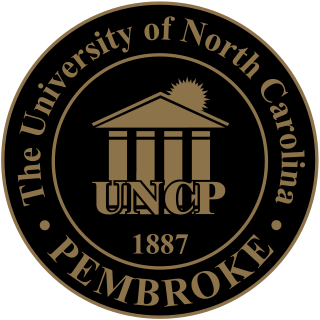
The University of North Carolina at Pembroke is a public university in Pembroke, North Carolina. UNC Pembroke is a master's level degree-granting university and part of the University of North Carolina system. Its history is intertwined with that of the Lumbee nation.
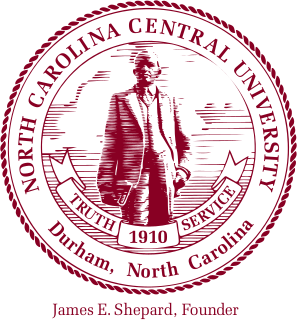
North Carolina Central University, a state-supported liberal arts institution, is a public, historically black university in Durham, North Carolina. Founded by Dr. James E. Shepard in affiliation with the Chautauqua movement in 1909, it was supported by private funds from both Northern and Southern philanthropists. It was made part of the state system in 1923, when it first received state funding and was renamed as Durham State Normal School. It added graduate classes in arts and sciences and professional schools in law and library science in the late 1930s and 1940s.
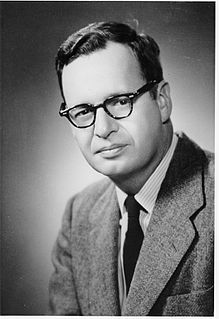
Douglas Maitland Knight was an American educator, businessman, and author. He was a former professor of literature at Yale University prior to his presidency at Lawrence College from 1954 to 1963. Stemming from his work at Lawrence College was his subsequent term as president of Duke University, where he served until he resigned in 1969 following student protests and the takeover of the university's main administrative building by students calling for a black cultural center and African-American studies program, among other things. Controversy over these issues led to his transition into the business world at RCA and Questar Corporation. Knight never fully retired, and was known to consult for Questar's Board of Trustees years after his departure.

The Confederate Monument, University of North Carolina, commonly known as Silent Sam, is a bronze statue of a Confederate soldier by Canadian sculptor John A. Wilson, which once stood on McCorkle Place of the University of North Carolina at Chapel Hill (UNC) from 1913 until it was pulled down by protestors on August 20, 2018. Its former location has been described as "the front door" of the university and "a position of honor".
Timothy B. Tyson is an American writer and historian who specializes in the issues of culture, religion, and race associated with the Civil Rights Movement. He is a senior research scholar at the Center for Documentary Studies at Duke University and an adjunct professor of American Studies at the University of North Carolina.
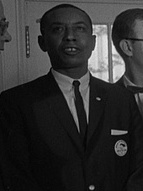
Floyd Bixler McKissick was an American lawyer and civil rights activist. He became the first African-American student at the University of North Carolina School of Law. In 1966 he became leader of CORE, the Congress of Racial Equality, taking over from James Farmer. A supporter of Black Power, he turned CORE into a more radical movement. In 1968, McKissick left CORE to found Soul City in Warren County, North Carolina. He endorsed Richard Nixon for president that year, and the federal government, under President Nixon, supported Soul City. He became a state district court judge in 1990 and died on April 28, 1991. He was a member of Alpha Phi Alpha fraternity.
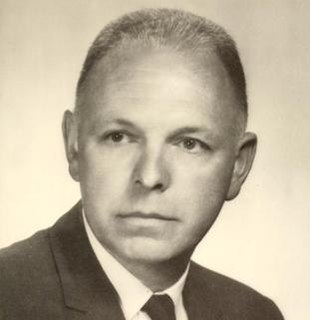
Joseph Carlyle "Lyle" Sitterson was an American educator who served as chancellor of the University of North Carolina at Chapel Hill from February 16, 1966, to January 31, 1972.

The University of North Carolina at Chapel Hill is a coeducational public research university located in Chapel Hill, North Carolina, United States. It is one of three schools to claim the title of the oldest public university in the United States. The first public institution of higher education in North Carolina, the school opened on February 12, 1795.

Youth for Western Civilization (YWC) was a student group registered as a 501(c)(3) non-profit organization in the United States. The group became a corporation in 2006 and began actively organizing in 2008. Kevin DeAnna founded the organization. Its honorary chairman was former Colorado US Representative Tom Tancredo.
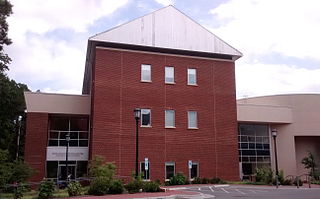
The Sonja Haynes Stone Center for Black Culture and History was founded on July 1, 1988 at the University of North Carolina at Chapel Hill.
The Black Action Movement was a series of protests by African American students against the policies and actions of the University of Michigan. The protests themselves took place on three occasions in 1970, 1975, and 1987. Many student organizations participated in the movement, which has been called one of the most challenging for administrators in the school's history. Alan Glenn of the Ann Arbor Chronicle said of the 1970 protests that "the BAM strike became one of the few protests of that era in which the students could make a valid claim of victory."
Immediately following the assassination of Martin Luther King Jr., the Silent Vigil was a social protest at Duke University that not only demanded collective bargaining rights for AFSCME Local 77, the labor union for nonacademic employees, but also advocated against racial discrimination on campus and in the surrounding community of Durham, North Carolina. Occurring from April 4, 1968, to April 12, 1968, members of the University Christian Movement began planning a campus-wide vigil in memoriam of Dr. King. Another group of undergraduate students called for a protest march to address prevalent issues concerning the primarily African-American nonacademic employees at Duke in Local 77. Together, both student groups, along with the support of Local 77, most of the teaching faculty, and civilians not affiliated with the university, sparked a non-violent demonstration that involved over 2,000 participants, making it the largest in Duke's history. The Silent Vigil stands out from other contemporary college movements due to the collaboration between primarily white students and faculty, and mainly African-American workers. Furthermore, unlike rowdier protests at the University of California, Berkeley and Columbia University, Duke's Silent Vigil received considerable praise for its peaceful approach, especially considering its surrounding Southern backdrop. Inspired by the Civil Rights Movement, the Silent Vigil not only aimed to externally change Duke's white, privileged, and apathetic image in the eyes of the Durham community, but also internally set a powerful precedent on Duke's campus for student activism in the future.
The Third World Liberation Front (TWLF) rose in 1968 as a coalition of ethnic student groups on college campuses in California in response to the Eurocentric education and lack of diversity at San Francisco State College and University of California, Berkeley. The TWLF was instrumental in creating and establishing Ethnic Studies and other identity studies as majors in their respective schools and universities across the United States.
In 1968, the Third World Liberation Front (TWLF), a coalition of the Black Students Union, the Latin American Students Organization, the Filipino American Collegiate Endeavor (PACE) the Filipino-American Students Organization, the Asian American Political Alliance, and El Renacimiento, a Mexican-American student organization, formed at San Francisco State University (SFSU) to call for campus reform. Another Third World Liberation Front formed at University of California, Berkeley in January 1969. These coalitions initiated and sustained the Third World Liberation Front strikes of 1968, one of the longest student strikes in US history.
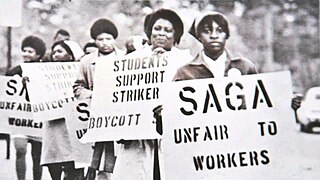
The UNC Food Workers Strike was a labor strike at the University of North Carolina at Chapel Hill that began on February 23 and lasted until December 9, 1969. Through the leadership of Mary Smith and Elizabeth Brooks and with the support of student groups and civil rights activists, the strike was organized around a list of demands to improve the working conditions of black food workers. The protesting employees of Lenoir Hall presented this list to University Chancellor J. Carlyle Sitterson, who responded by asserting his commitment "to be[ing] responsive to the educational needs of. .. all races, colors, and creeds" but also his inability to treat any group with preference and to make significant changes on their behalf. He directed a police response to campus disruptions with North Carolina Governor Robert W. Scott, further instigating the protesters and drawing widespread attention to the issue. The subsequent formation of the UNC Non-Academic Employees Union prompted Governor Scott to negotiate with and ultimately accept the terms of the protesters on March 21, 1969. UNC facility employees experienced an increase in wage and working conditions, and this lasted until food management transferred from internal to contractual service provided by SAGA Food Service less than a month later. The change in employers sparked workers, many of whom participated in the first strike, to voice their discontent once again. Employees and students responded immediately, with the strike resuming, among other forms of protest, until its conclusion on December 9, 1969, when black supporters threatened to descend on the campus to elevate the issue if union negotiations did not begin.
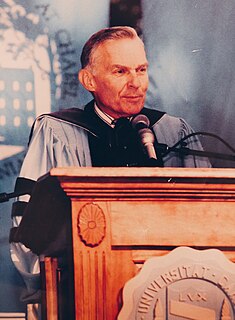
Paul Hardin III was an American academic administrator who spent 27 years as a leader in higher education. He was the chancellor of the University of North Carolina at Chapel Hill from 1988 to 1995, president of Wofford College from 1968 to 1972, of Southern Methodist University from 1972 to 1974, and of Drew University from 1974 to 1988. He was trained as a lawyer at Duke University and at the Duke University Law School.
The Carolina Population Center (CPC) is an interdisciplinary research center at the University of North Carolina at Chapel Hill. CPC was established in 1966. The primary goals of the center are to conduct research on population, health, aging, and the environment, and share data and findings that push the field forward and train the next generation of population scholars.
Nelson Ferebee Taylor was an American lawyer and educational administrator who served as chancellor of the University of North Carolina at Chapel Hill from 1972 to 1980.

Carolina Review is an independent conservative journal published by undergraduate and graduate students attending the University of North Carolina at Chapel Hill. The Review has been in circulation for nearly 30 years, with the first issue dating back to 1993. The journal prints every month and is composed of original works by student staff writers. It is the only major collegiate publication of its type to have been founded in the early 1990s. Holding to the journal's motto on the cover of recent prints, "Ad Conservandam, Libertatem", the journal is a staunchly conservative and libertarian publication that promotes right-wing politics in their writings.
References
- ↑ "Freedom news". The Crisis. NAACP. April 1969. Retrieved 21 November 2011.
- 1 2 Turner, Jeffrey A. (2010). Sitting in and speaking out: student movements in the American South, 1960-1970. University of Georgia Press. p. 204. ISBN 978-0-8203-3599-5.
- 1 2 Link, William A. (1997). William Friday: Power, Purpose, and American Higher Education. UNC Press Books. p. 142. ISBN 0-8078-4680-5.
- 1 2 "Part III: The BSM and the Foodworkers' Strike - "I Raised My Hand to Volunteer" Exhibit". Lib.unc.edu. Archived from the original on 2012-10-11. Retrieved 2013-02-25.
- ↑ "The BSM's 23 Demands: December 1968". The Carolina Story. University of North Carolina.
- ↑ "Black ink Black Student Movement, University of North Carolina at Chapel Hill". North Carolina Newspapers.
- ↑ Link, William (1995). William Friday: Power, Purpose, and American Higher Education. The University of North Carolina Press. pp. 142–144. ISBN 0-8078-2167-5.
- ↑ Lucas, Adam (2010). Carolina Basketball: A Century of Excellence. Tobacco Road Media Inc. p. 99. ISBN 978-0-8078-3410-7.
- ↑ "Food Workers' Strike: February to March 1969". The Carolina Story: A Virtual Museum of University History.
- 1 2 3 Bailey, Jordan. "An Overlooked History: African American studies was born from the struggles of black students and staff on campus in the 1960s".
- ↑ "Students Support the Food Workers". The Carolina Story: A Virtual Museum of University History.
- ↑ Link, William (1995). William Friday: Power, Purpose, and American Higher Education. The University of North Carolina Press. pp. 146–148. ISBN 0-8078-2167-5.
- ↑ "UNC Labor History". UNC Student Action With Workers.
- ↑ "Black Ink". Black Ink. November 1, 1969.
- ↑ "David Duke Protest, 1975". The Carolina Story: A Virtual Museum of University History.
- ↑ "Administration Protests, 1979". The Carolina Story: A Virtual Museum of University History.
- ↑ "The "Student Body" Controversy". The Carolina Story: A Virtual Museum of University History.
- ↑ "Outside Support For A Black Culture Center". The Carolina Story: A Virtual Museum of University History.
- ↑ History Archived March 27, 2008, at the Wayback Machine
- ↑ "Timeline". Dsp4unc.wordpress.com. Retrieved 2013-02-25.
- ↑ Hudson, Caroline (March 28, 2012). "Trayvon Martin's memory was honored at UNC with a Franklin Street march". The Daily Tar Heel.
- ↑ "Mission and History - Black Student Movement" . Retrieved 2013-02-25.
- ↑ "UNC's Black Student Movement Calls on Chancellor". WRAL.com. 1997-11-14. Retrieved 2013-02-25.
- ↑ "Black Student Movement pushes political awareness". The Daily Tar Heel. 2009-10-29. Retrieved 2013-02-25.
- ↑ "Same by Race, Different By Name". Facebook. Retrieved 2013-02-25.
- ↑ "Past BSM Events". UNC BSM.
- ↑ Tastet, Dylan (November 18, 2015). "BSM discusses what should change to improve UNC experience for black students". The Daily Tar Heel.
- ↑ "The "We Gon Be Alright" Scholarship - 2016". UNC BSM. Archived from the original on 2016-03-07. Retrieved 2016-03-03.
